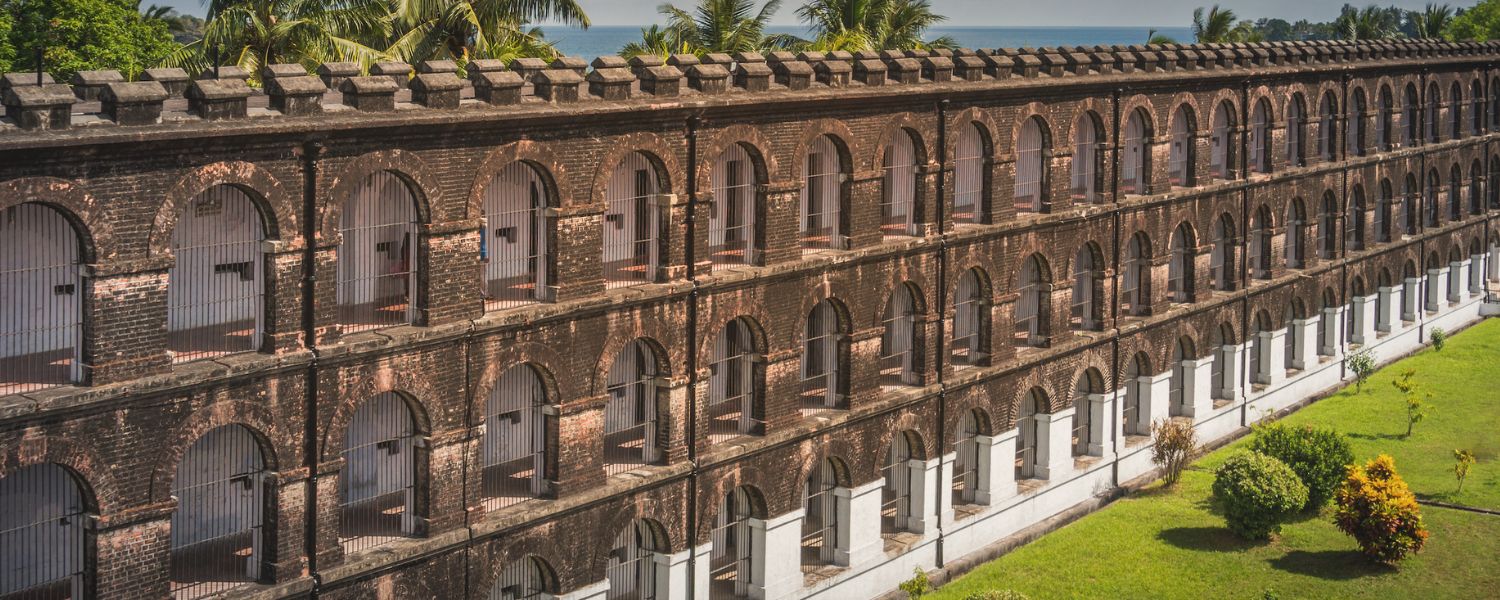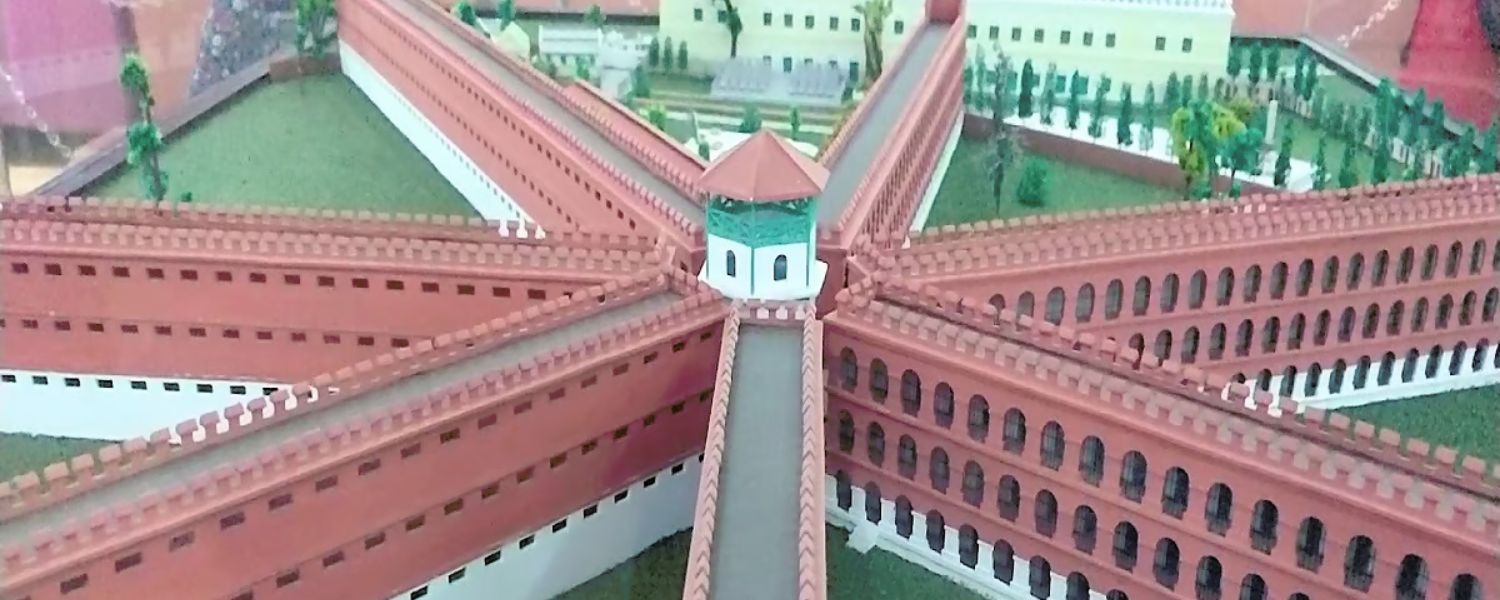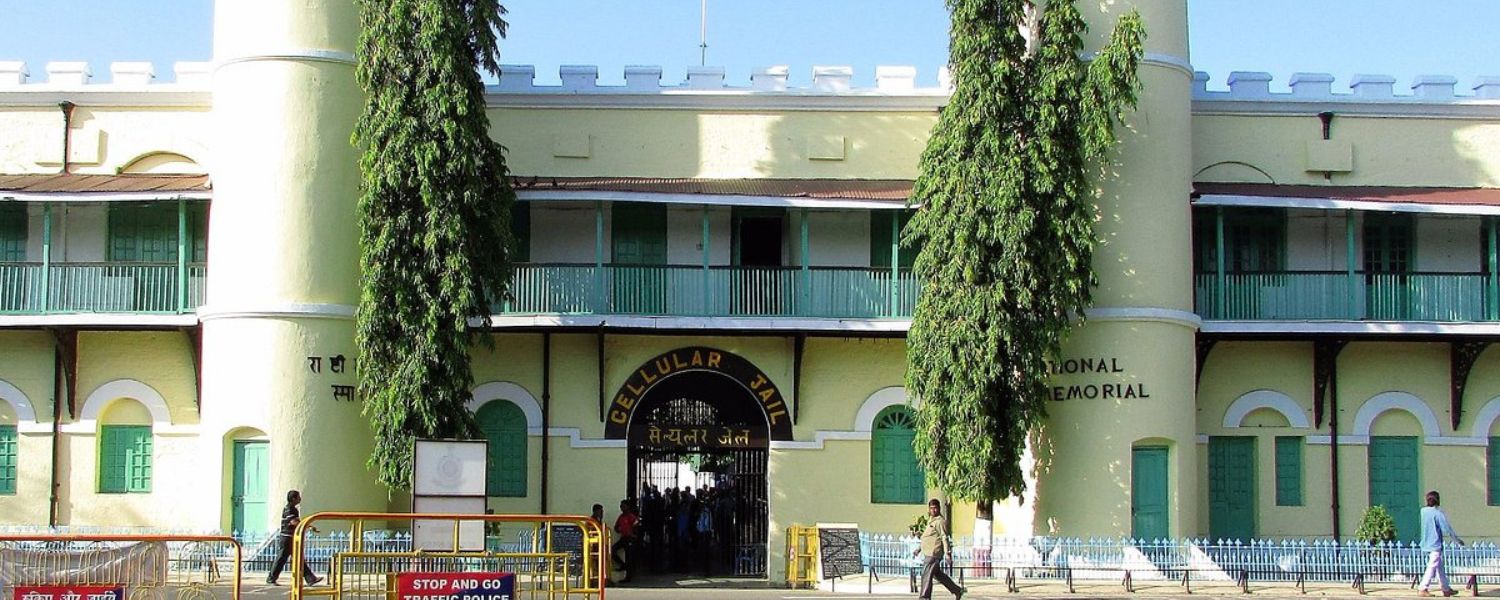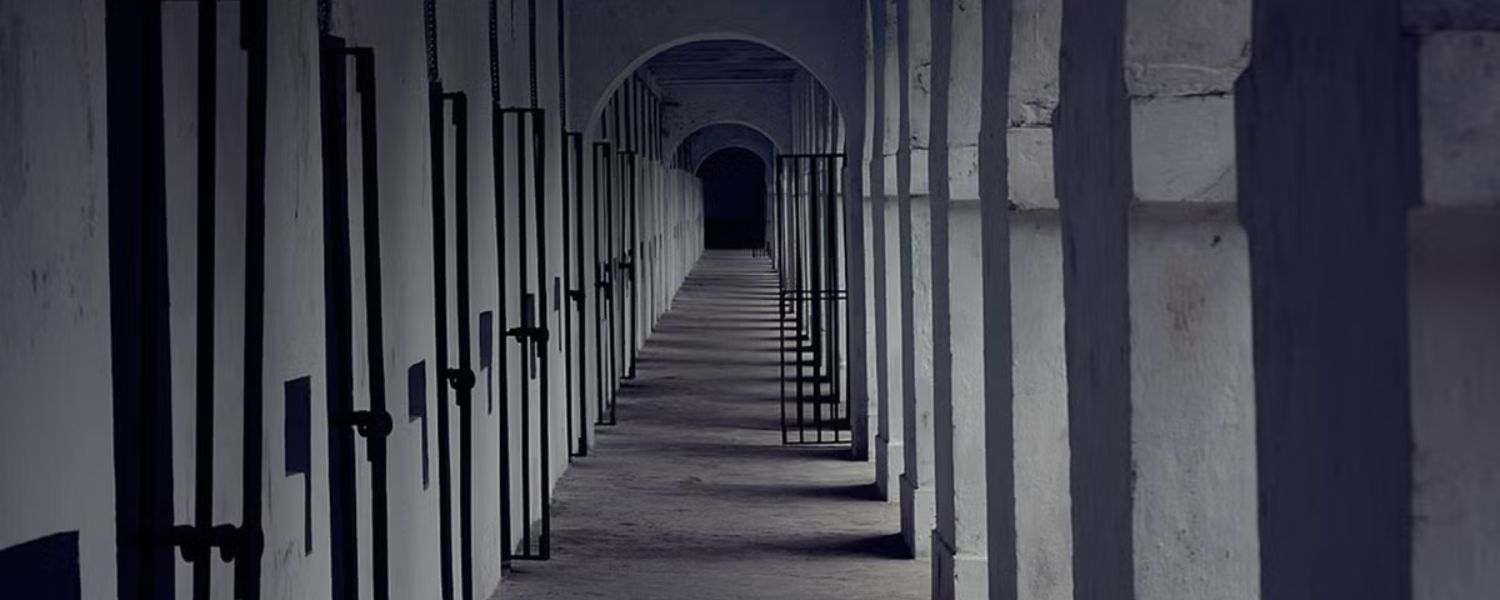Welcome to the haunting echoes of Cellular Jail, an imposing three-storeyed structure erected by the British in 1906.
However, this formidable tower is a poignant testament to India’s tumultuous struggle for Independence. Serving as a grim exile for criminals and brave freedom fighters, Cellular Jail holds a sad significance in the annals of Indian history.
Its silent walls bear witness to the unimaginable hardships endured by those incarcerated within, a testament to the resilience and unwavering spirit of the human soul.
Now revered as a national memorial, Cellular Jail draws pilgrims and history enthusiasts alike, eager to pay homage to the brave souls who sacrificed their freedom for the nation’s cause.
Further, among its stone corridors, the names of legendary freedom fighters resonate, each etched into the fabric of India’s liberation movement.
Today, Cellular Jail is a physical monument and a solemn reminder of the sacrifices made for the cherished ideals of liberty and independence.
1. History

However, the Cellular Jail is a haunting reminder of a dark chapter in Indian history. Following the suppression of the rebellion, the British authorities resorted to severe measures to quell dissent.
Captured rebels faced trials, often resulting in executions or exile to the remote cellular Jail of Andaman Islands. Additionally, under the custody of individuals like jailer David Barry and Major James Pattison Walker, hundreds were transported to this desolate location.
Among them were those associated with the Mughal royal family or who had petitioned Bahadur Shah Zafar during the uprising.As the settlement expanded, so did the need for a high-security prison.
Furthermore, after investigating the penal settlement, Charles James Lyall and A. S. Lethbridge recommended constructing a facility designed for harsh treatment—the Cellular Jail.
This imposing structure was more than just a physical prison; it represented exclusion and isolation within a broader landscape of punishment. Here, convicts toiled in chain gangs, constructing buildings and harbor facilities under brutal conditions.
Further, despite its intended purpose, the Cellular Jail symbolized the resilience of the independence movement. Further, its very existence underscored the failure of British attempts to suppress dissent.
Today, it stands as a testament to the sacrifices made by those who fought for India’s freedom, serving as a somber memorial to their enduring spirit.
2. Architecture

Also known as Kālā Pānī, stands as a solemn testament to India’s struggle for independence. Constructed between 1896 and 1906, this imposing structure embodies a dark chapter in colonial history.
However, the original tower, fashioned from bricks imported from Burma, was a stark puce-colored behemoth, its seven wings spreading like spokes from a central tower.
Inspired by Jeremy Bentham’s Panopticon design, the building served as a watchful eye, ensuring constant surveillance over the 696 cells within.
Each cell, measuring 4.5 by 2.7 meters, was a secluded enclave designed to prevent inmate communication. Strategically placed at a height of 3 meters, ventilators offered only glimpses of the outside world, further reinforcing the isolation.
The ingenious layout ensured that prisoners could never catch sight of each other, let alone communicate, perpetuating a harrowing sense of solitude.
The locks, a cruel mechanism of control, taunted the desperate hands of inmates, forever out of reach. With keys tossed inside cellular Jail, any hope of escape or defiance was swiftly extinguished. This dreadful design, intended to quell dissent, fueled the flames of resistance, inspiring generations to rise against oppression.
3. Prison conditions and inmates

The conditions endured by inmates within the infamous Cellular Jail were nothing short of harrowing. As highlighted in a poignant exposé by The Guardian, prisoners within its grim confines faced a barrage of atrocities, from relentless torture to coercive medical experiments and grueling forced labor.
For many, the punishment culminated in death. The abysmal quality of prison sustenance often drove desperate inmates to undertake hunger strikes, only to be met with the cruel response of forced feeding by the authorities.
One such convict etched in the annals of Cellular Jail’s grim history was Sher Ali Afridi, a former officer of the Punjab Mounted Police. Sentenced to death initially, his penalty was commuted to life imprisonment, and he was exiled to the Andaman Islands.
Here, his resentment simmered into a vengeful act, culminating in the assassination of the 6th Earl of Mayo, Viceroy of India, during a visit in 1872.
Afridi, driven by a sense of injustice, met his fate at the gallows for his heinous act, leaving behind a legacy of anguish within the walls of Cellular Jail.
4. INA control

The Cellular Jail stands as a poignant symbol of India’s struggle for Independence, bearing witness to the tumultuous events of history that unfolded within its walls.
Following the Japanese invasion of the Andaman Islands in March 1942, the jail became a site of profound significance.
It housed British prisoners-of-war, Indian supporters of the British, and members of the Indian Independence League, who endured unspeakable hardships under Japanese rule.
During these cellular jail timings, Subhas Chandra Bose, a towering figure in India’s fight for freedom, asserted nominal control over the islands.
It was here, amidst the confines of the Cellular Jail, that Bose raised the Indian National Flag, marking a defiant assertion of Independence. The Jail became a focal point for the struggle against colonial rule, symbolizing resilience and defiance.
However, the British regained control of the islands in October 1945, signaling the end of this chapter in history. Today, the Cellular Jail is a solemn reminder of the sacrifices made in pursuing freedom.
5. Post Independence

Following India’s Independence, the landscape of Cellular Jail underwent significant transformations, echoing the nation’s evolving narrative.
While two prison wings were dismantled, sparking dissent among former inmates and political figures who viewed it as a denial of their historical legacy, new endeavors breathed life into its storied corridors.
In 1963, the establishment of the Govind Ballabh Pant Hospital within the premises marked a pivotal shift, addressing the community’s healthcare needs with a 500-bed facility staffed by around 40 dedicated physicians.
Prime Minister Morarji Desai designated Cellular Jail a National Memorial on February 11, 1979, recognizing its historical significance and honoring the resilience of those who once suffered within its confines.
Commemorating the Jail’s centenary in 2006, the Indian government lauded former prisoners, reaffirming their indomitable spirit.
Today, visitors can immerse themselves in the poignant saga of Cellular Jail through guided tours and captivating cellular jail light and sound show presentations, offered in both English and Hindi, ensuring that its legacy endures for generations to come. Explore the exotic islands of India for a memorable adventure.
Conclusion
In conclusion, Cellular Jail is a solemn testament to the indomitable spirit of India’s struggle for Independence. Its imposing structure, with its solitary cells designed to isolate prisoners’ food, serves as a haunting reminder of the inhumane atrocities inflicted during colonial rule.
Despite the relentless oppression endured within its walls, the Jail became a crucible of resistance, inspiring generations to fight for freedom.
Today, Cellular Jail is a National Memorial, a place of pilgrimage where visitors can pay homage to the sacrifices made by brave souls who endured unimaginable hardships for the nation’s cause.
However, through guided tours and immersive presentations, we continue to resonate with its legacy, ensuring that we never forget the stories of courage and resilience within Cellular Jail.
A visit to cellular jail port Blair offers a poignant journey into the heart of India’s struggle for freedom, inviting reflection on the price paid for liberty.
FAQ
Q. Why is Cellular Jail famous?
A. Cellular Jail, a three-storeyed prison constructed by the British in 1906, is a poignant symbol of India’s struggle for Independence.
Freedom fighters revere it as a pilgrimage destination, bearing witness to the inhumane atrocities inflicted upon its prisoners.
Today, it stands as a National Memorial, a testament to the resilience and sacrifice of those who fought against colonial oppression.
Q. What is the meaning of cellular jail?
A. The name “Cellular Jail” stems from its design, featuring solitary cells that isolated prisoners from one another. Its radial structure ensured no inmate communication, reflecting the stringent measures enforced to quell dissent.
Q. What was cellular jail punishment like?
A. Punishments in Cellular Jail were severe, ranging from torture and flogging to the use of iron restraints and unhygienic living conditions. The absence of toilet facilities exacerbated the suffering of its inmates.
Q. Can we visit the Cellular Jail?
A. A visit to Cellular Jail in Port Blair is highly recommended. It offers a sobering insight into India’s struggle for freedom, complemented by a poignant sound and light show that brings history to life.










